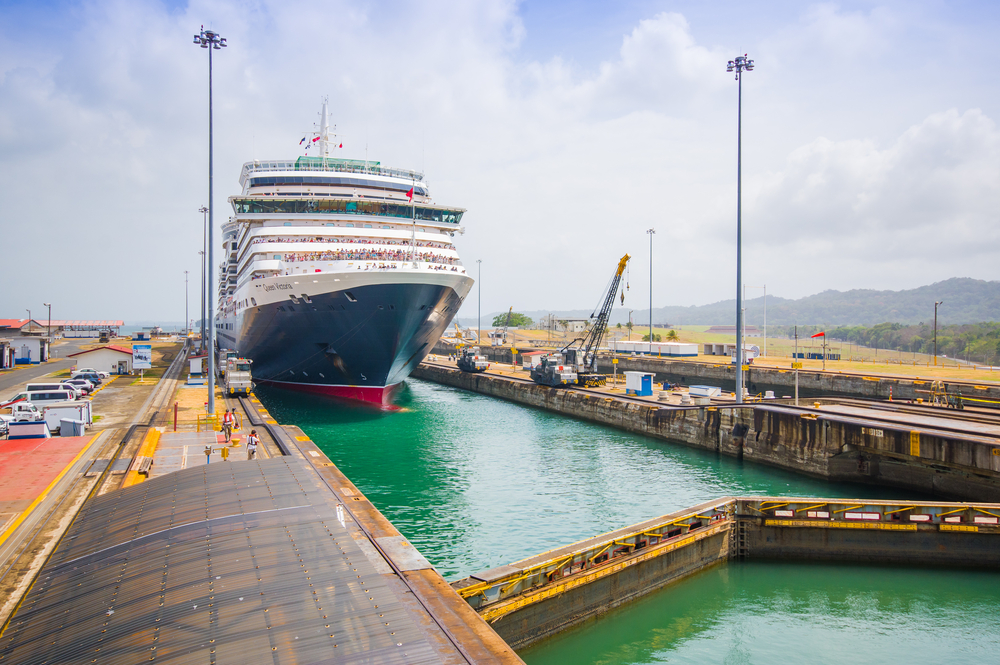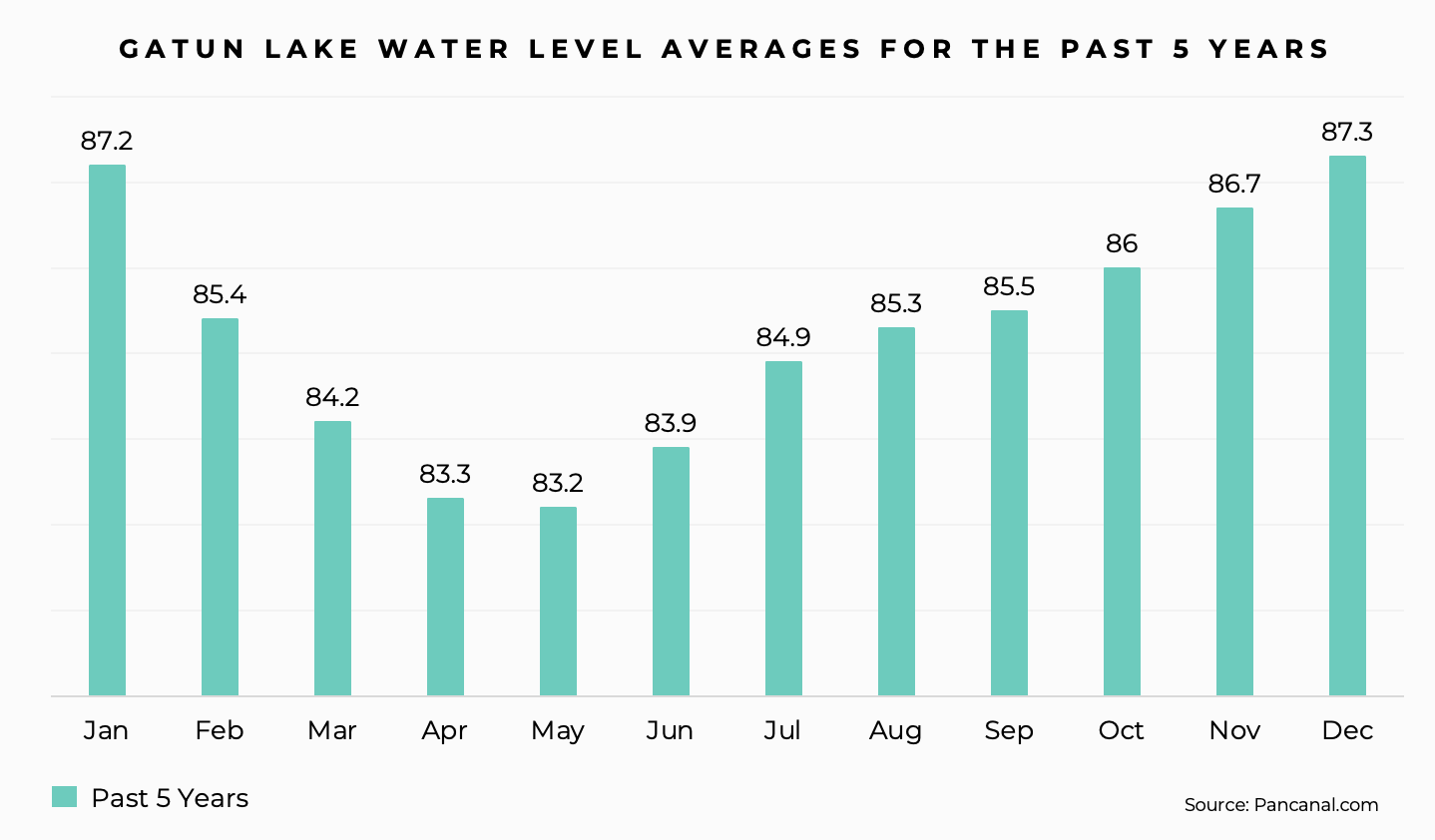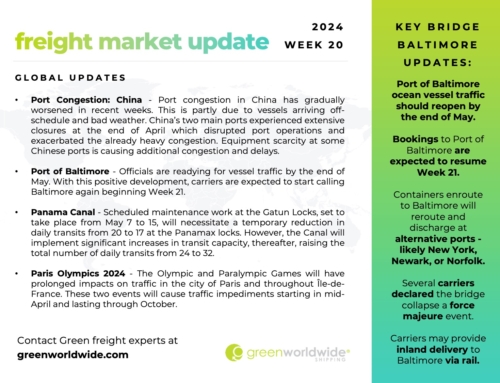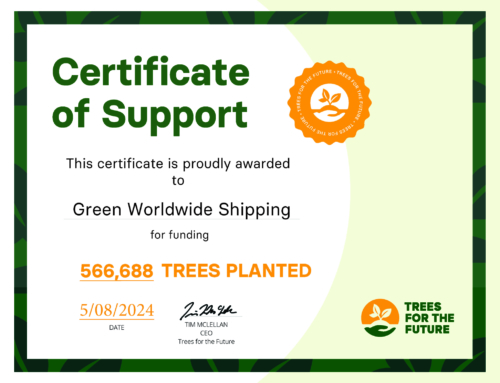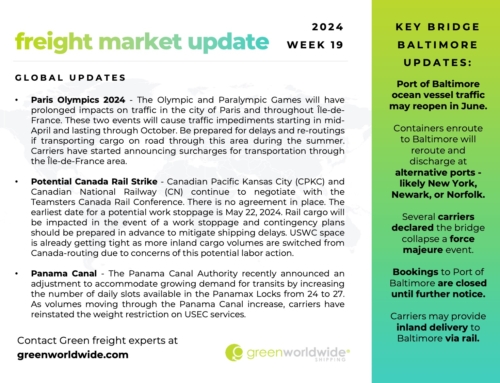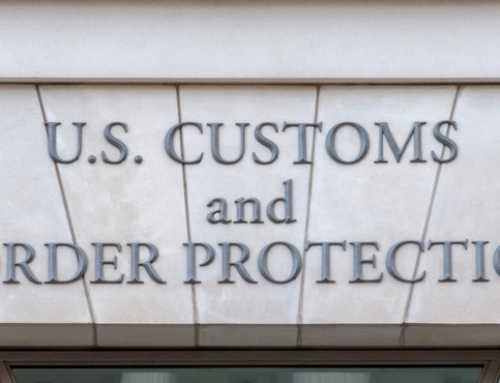The Panama Canal is a crucial shipping lane that connects the Atlantic and Pacific oceans, enabling vessels to bypass the long journey around the tip of South America. The canal is currently facing significant challenges due to declining water levels in the lake system that supports the canal.
DRY SEASON
Gatun Lake, forms a critical part of the canal, has seen water levels fall more quickly than expected due to an ongoing drought. During the dry season, which typically runs from December to May, water levels in the canal’s lake system fall. This year, water levels have fallen more rapidly than anticipated causing the canal’s watershed to drop roughly 70% below normal levels in the first half of April.
MAXIMUM VESSEL DRAFT REDUCED
In response to the declining water levels in Gaton Lake, the Panama Canal Authority (ACP) has reduced the maximum draft for vessels that pass through the canal from 50 feet Tropical Fresh Water (TFW) to 47.5 feet TFW. This reduction means that vessels, particularly larger ones like neo-Panamax containerships, must carry less weight to cross the canal.
The draft refers to the distance between the waterline and the deepest point of a vessel.
The ACP announced additional reductions in the maximum authorized draft that will take effect on May 5 and May 12, lowering it to 45.0 feet TFW. The authorities have not announced a deadline for these restrictions but remain hopeful that they will be lifted as soon as possible once the rainy season begins, which is typically in late May.
ALTERNATE ROUTES AND MODES OF TRANSPORTATION
Draft restrictions may lead to vessel congestion and longer transit times for goods moving through the Panama Canal. Shippers have options to mitigate the potential impact of these draft restrictions including alternate routes, modes of transit, and working closely with manufacturers to develop contingency plans in anticipation of this seasonal low-water in the Panama Canal. One alternative route is the Suez Canal, which connects the Mediterranean and Red Seas. While this route is longer than the Panama Canal, it can accommodate larger vessels and is less congested.
Another option is to use intermodal transportation, which involves combining multiple modes of transportation, such as trucking, rail, and ocean freight, to move goods. Intermodal transportation can offer greater flexibility and cost savings compared to using a single mode of transportation. Additionally, this approach can help mitigate the impact of any disruptions that may occur along the supply chain.
NEED HELP WITH SHIPMENTS?
Contact [email protected] to speak with Green’s freight experts.

